Stalin (62 page)
Authors: Oleg V. Khlevniuk
Tags: #Biography & Autobiography, #Presidents & Heads of State, #History, #Europe, #Russia & the Former Soviet Union, #Modern, #20th Century
On vacation in 1933. Stalin’s daughter Svetlana sits on the lap of then Georgian party boss Lavrenty Beria. Russian State Archive of Social and Political History.
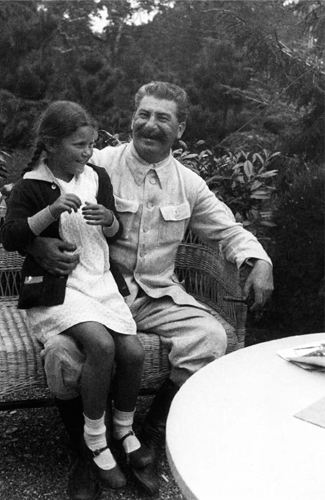
The loving father: Stalin with Svetlana, 1933.
Russian State Archive of Social and Political History.
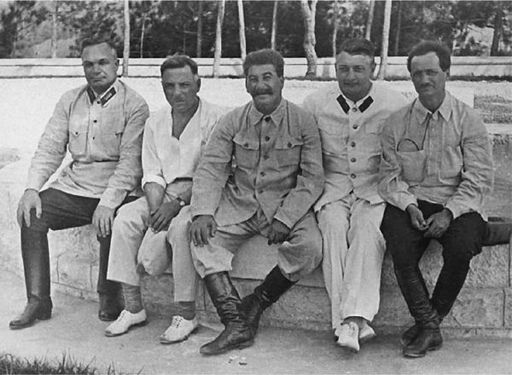
A visit in the south, 1933. Left to right: chief of the Red Army General Staff Aleksandr Yegorov; Defense Commissar Kliment Voroshilov; Stalin; Soviet military leader Mikhail Tukhachevsky; Abkhaz leader Nestor Lakoba. Lakoba died in 1936 under mysterious circumstances and was soon proclaimed an “enemy of the people.” Tukhachevsky was shot in 1937 and Yegorov in 1938. Russian State Archive of Social and Political History.
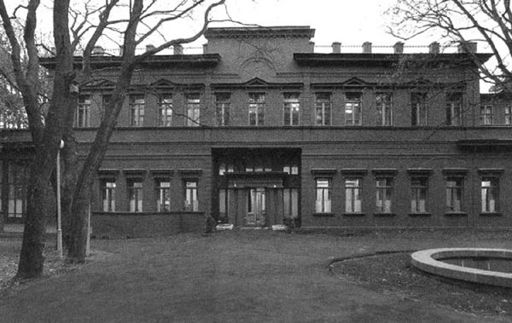
The near dacha, where Stalin lived (starting after his wife’s suicide) and died.
Russian State Archive of Social and Political History
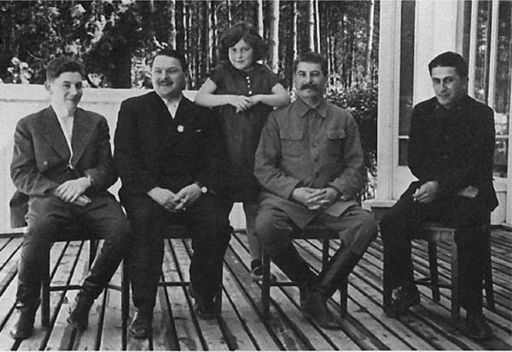
A rare family gathering in the mid-1930s. Left to right: Stalin’s son Vasily, Leningrad party boss Andrei Zhdanov, daughter Svetlana, Stalin, and Stalin’s son (by his first wife) Yakov, who was killed in a Nazi POW camp. Russian State Archive of Social and Political History.
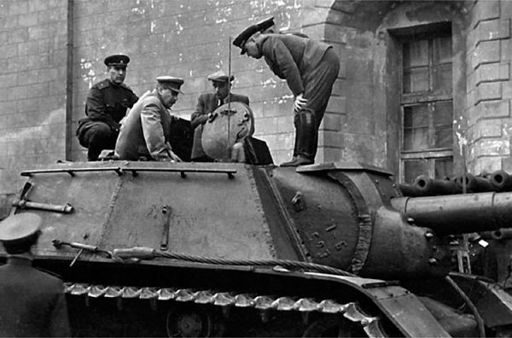
Stalin inspects new military hardware at the Kremlin, September 1943. Russian State Archive of Social and Political History.
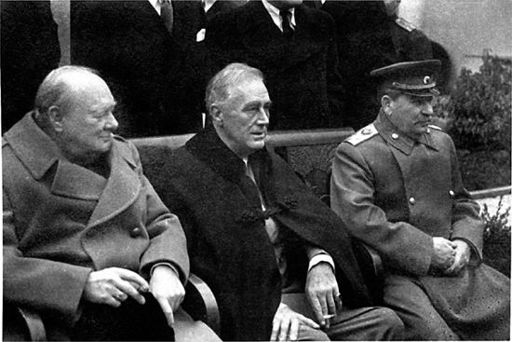
The Allies: Churchill, Roosevelt, and Stalin in Crimea, February 1945.
Russian State Archive of Social and Political History.
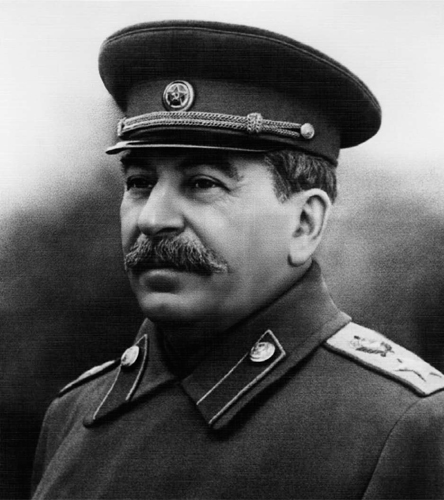
Generalissimo Stalin immediately after the war.
Russian State Archive of Social and Political History.
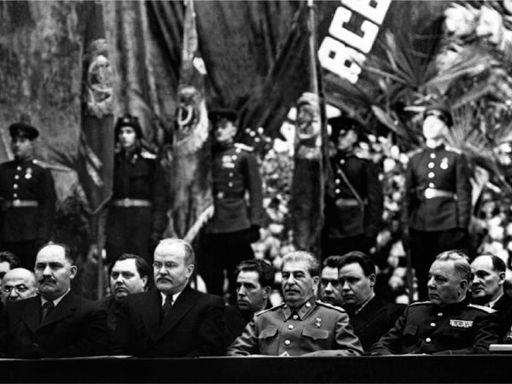
Stalin and his comrades at a celebration in January 1947. Left to right: Beria, Kaganovich, Malenkov, Molotov, Kuznetsov, Stalin, Kosygin, Voznesensky, Voroshilov, and Shkiriatov. Two years later Kuznetsov and Voznesensky were arrested and shot. Russian State Archive of Social and Political History.
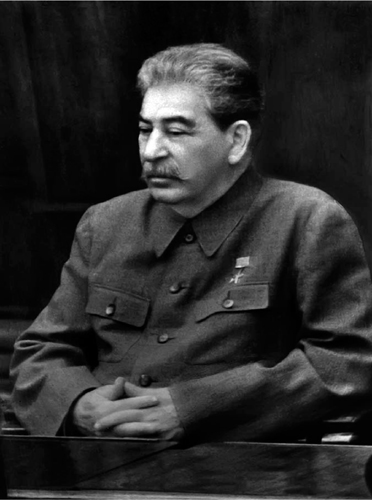
Stalin at a party congress in 1952, four months before his death.
Unflattering photographs like this one were not published. Russian State Archive of Social and Political History.
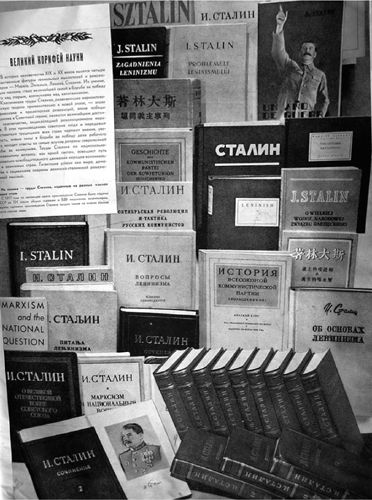
Millions of copies of Stalin’s works were published in all languages. After his death they provided tons of recycled paper pulp. Russian State Archive of Social and Political History.
NOTES
Preface
1
. Adam. B. Ulam,
Stalin: The Man and His Era
(New York, 1973); Robert C. Tucker:
Stalin as Revolutionary, 1879–1929: A Study in History and Personality
(New York, 1973), and
Stalin in Power: The Revolution from Above, 1928–1941
(New York, 1990).
2
. Robert Service,
Stalin: A Biography
(London, 2004); Hiroaki Kuromiya,
Stalin: Profiles in Power
(New York, 2005); Sarah Davies and James Harris, eds.,
Stalin: A New History
(New York, 2005); Miklos Kun,
Stalin: An Unknown Portrait
(Budapest and New York, 2003); Ronald Grigor Suny,
Stalin and the Russian Revolutionary Movement: From Koba to Commissar
(forthcoming from Oxford University Press). Concerning Stalin the dictator and his relations with the rest of the Soviet leadership, see Oleg V. Khlevniuk,
Master of the House: Stalin and His Inner Circle
(New Haven and London, 2008), and Yoram Gorlizki and Oleg Khlevniuk,
Cold Peace: Stalin and the Soviet Ruling Circle, 1945–1953
(New York, 2004). Some works have attempted to peer into Stalin’s inner world: A. J. Rieber, “Stalin, Man of the Borderlands,”
American Historical Review
106, no. 4 (2001): 1651–1691; Erik van Ree,
The Political Thought of Joseph Stalin: A Study in Twentieth-Century Revolutionary Patriotism
(London and New York, 2002); B. S. Ilizarov,
Tainaia zhizn’ Stalina
(Moscow, 2002); Donald Rayfield,
Other books
Ghouls Night Out by Terri Garey
Leather and Lace (Tempered Steel Book 2) by Adams, Maggie
Bill Dugan_War Chiefs 04 by Quanah Parker
Smuggler's Lady by Jane Feather
Eichmann en Jerusalén. Un estudio acerca de la banalidad del mal by Hannah Arendt
Journey to the Lost Tomb (Rowan and Ella Book 2) by Kiernan-Lewis, Susan
Blue Ruin by Grace Livingston Hill
Miss Peterson & The Colonel by Fenella J Miller
Chase by Dean Koontz
Living With Regret by Lisa de Jong